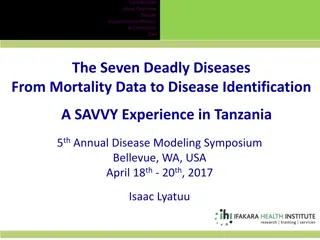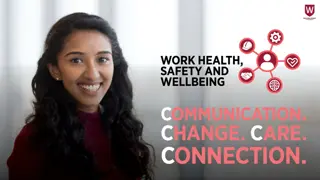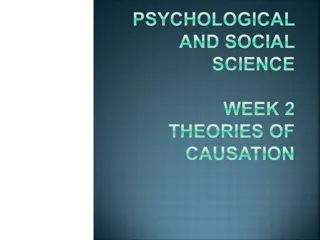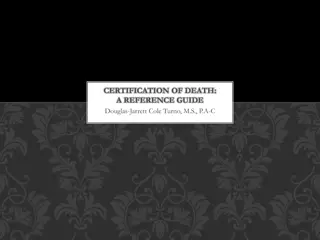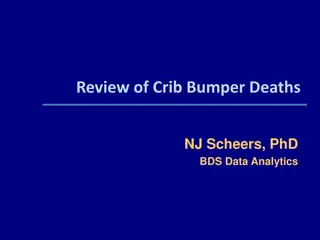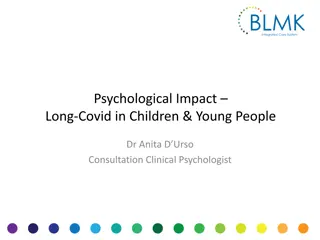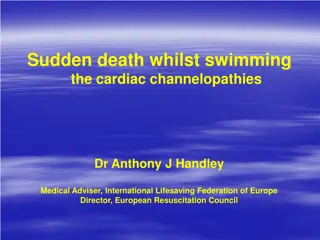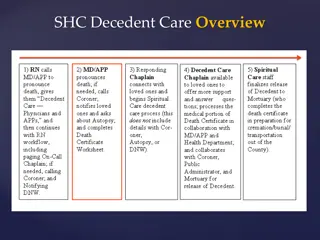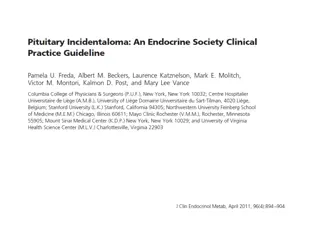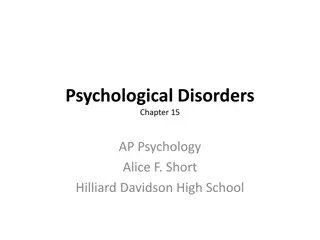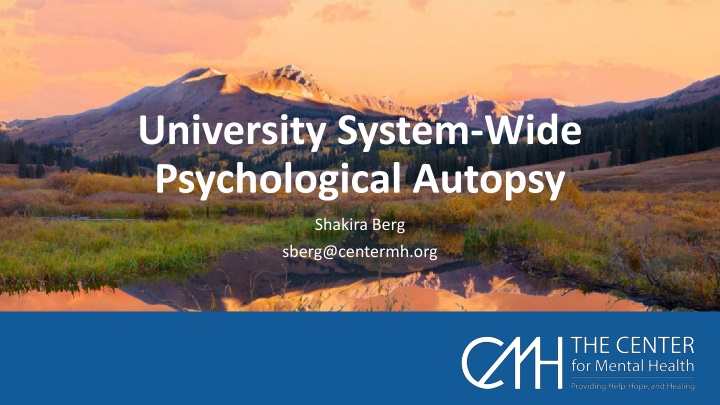
Exploring Psychological Autopsy for Suicide Prevention in Universities
Discover the importance of psychological autopsies in understanding and preventing suicides among college students. Learn how universities are addressing the increasing rates of suicide through system-wide approaches and proactive interventions. Gain insights into conducting interviews, reviewing tools, and identifying at-risk individuals to enhance suicide prevention efforts on campus.
Download Presentation

Please find below an Image/Link to download the presentation.
The content on the website is provided AS IS for your information and personal use only. It may not be sold, licensed, or shared on other websites without obtaining consent from the author. If you encounter any issues during the download, it is possible that the publisher has removed the file from their server.
You are allowed to download the files provided on this website for personal or commercial use, subject to the condition that they are used lawfully. All files are the property of their respective owners.
The content on the website is provided AS IS for your information and personal use only. It may not be sold, licensed, or shared on other websites without obtaining consent from the author.
E N D
Presentation Transcript
University System-Wide Psychological Autopsy Shakira Berg sberg@centermh.org
Background American Association of Suicidology Training Psychological Autopsy Why The Center for Mental Health chose to train someone to perform these How these are done for individuals
Psychological Autopsy A psychological autopsy helps promote understanding to the often asked why? questions raised by survivors regarding suicides, it is used in case control research studies to better ascertain risk factors for suicide and helps to answer questions of causation in both individual cases (where negligence might be the cause), suicides, or suicide clusters. The psychological autopsy can be a useful in gathering data for the purposes of suicide prevention or to better understand suicidal behavior. A psychological autopsy is often the most effective tool for providing information and answers in the wake of a suicide.
College Student Statistics Suicide is the second most common cause of death among college students. 1,000 students take their lives each year on college campuses. More than half of college students have had suicidal thoughts and 10% think about seriously considering attempting suicide.' 80-90% of college students who die by suicide were not receiving help from college counseling centers. Source *safecolleges.com
Project Discuss how the conversations with a University evolved to do a systems-wide psychological autopsy in relation to suicides and unknown deaths in their school. Suicides have been increasing at the University over the past 2 years. The need for suicide prevention is a systems-wide issue that can be researched and given to staff, faculty and students from a variety of agencies. The need to review what is already being done as far as suicide prevention as well as possible ways to help with this in the future.
What was done Interviews with students and faculty panels. Review of what tools they had been given as well. Review of needs/request to help in suicide prevention. How are students identified that might need additional support Review of internal systems that the University currently has in place as well as needs.
Specific Causation Opinion There are differing ideas about as to why these deaths are occurring and why they have increased over the past few years. There is a lot more information related to suicide as well as resources over suicide prevention that have become a mainstream focus over colleges and universities over the past few years as well. One of the top age groups for suicide is college aged people. Some of the possible ideas related to WCU specifically are related to the rural areas that these students live in. These also include limited resources, lack of knowledge about suicide prevention or how to access resources, limited social interaction. There also is a lack of knowledge on how to access resources as well as a lack of training on suicide prevention and intervention.
Concerns There are a few common themes. These include fear from lack of knowledge in general. Both staff and students reported being hesitant to engage with Administration about offered services in addition to not knowing that there were even services available, as well as a general frustration over the terminology around suicide. Students o There was great feedback as to what is currently being done as well as what they would want to occur in the future for suicide prevention as well as mental health resources. A few common themes were lack of knowledge on resources and lack of personalized information from administration regarding suicides and unknown deaths. Staff/Faculty o There was a great response from faculty and staff at every panel interview that was held . They had a lot of feedback, both negative and positive. However, there were varying opinions on everything from what resources are provided for suicide prevention to lack of any resources. A few common themes were lack of support from administration, requests for more thorough training and requests for more information in response to suicides and unknown deaths through follow up with staff and faculty.
Findings Discussion of what was found to be done well internally at the University as well as what was found to be lacking and needing additional support. Training, training, training Mental Health First Aid, QPR, Trauma Informed Training. Staff, Resident Advisors, Paid time to attend trainings or held at weekly and monthly team meetings. Tighter process around CARES team. Suicide Prevention Resources Broader range of counseling services and availability
Certification Process American Association of Suicidology Psychological Autopsy Certification Process Submit CV and cover letter Website: suicidology.org Virtual Trainings are currently being done at this time Annual Conference
Question and Answer Questions and Answer forum


